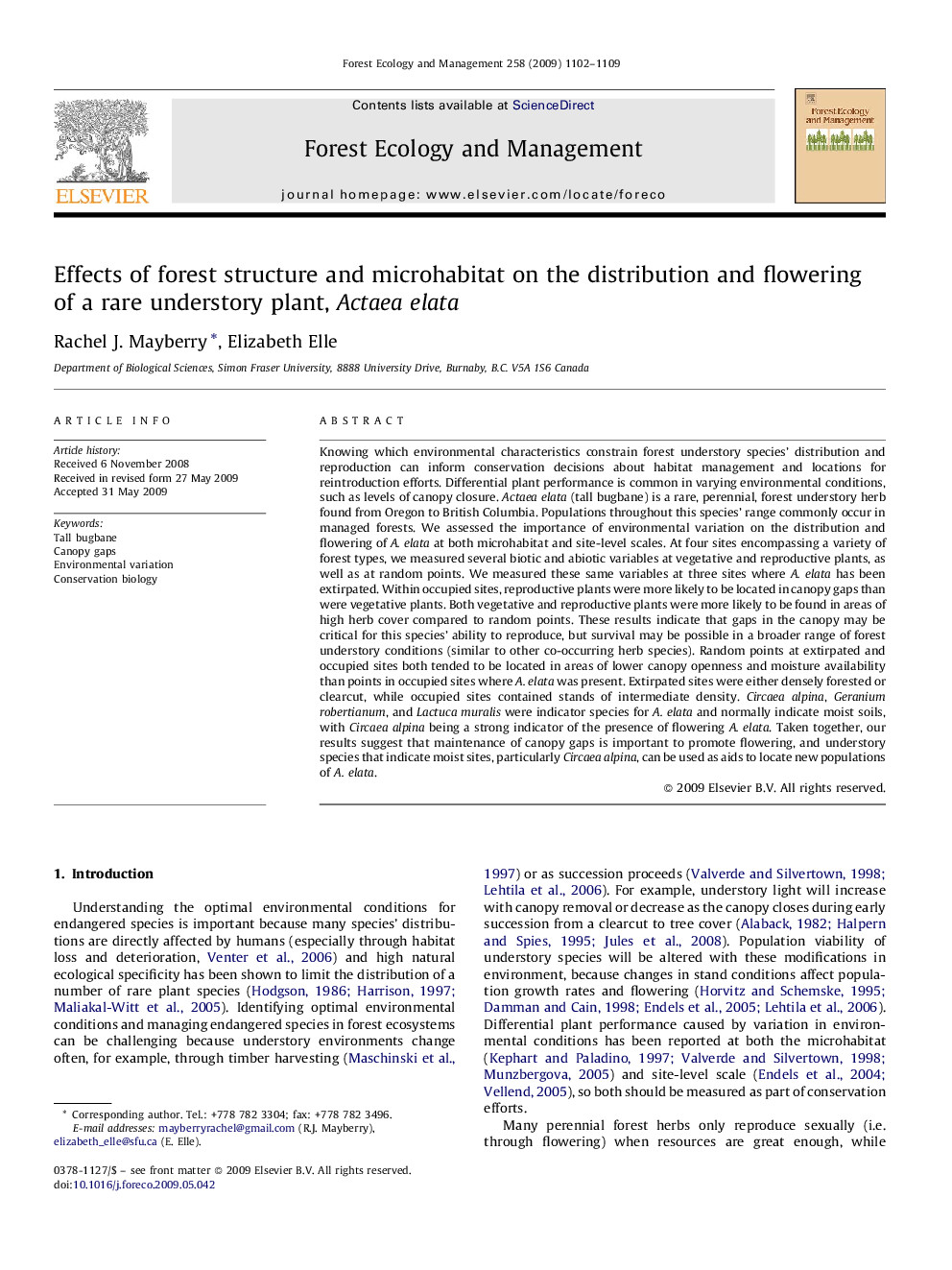| کد مقاله | کد نشریه | سال انتشار | مقاله انگلیسی | نسخه تمام متن |
|---|---|---|---|---|
| 88942 | 159328 | 2009 | 8 صفحه PDF | دانلود رایگان |

Knowing which environmental characteristics constrain forest understory species’ distribution and reproduction can inform conservation decisions about habitat management and locations for reintroduction efforts. Differential plant performance is common in varying environmental conditions, such as levels of canopy closure. Actaea elata (tall bugbane) is a rare, perennial, forest understory herb found from Oregon to British Columbia. Populations throughout this species’ range commonly occur in managed forests. We assessed the importance of environmental variation on the distribution and flowering of A. elata at both microhabitat and site-level scales. At four sites encompassing a variety of forest types, we measured several biotic and abiotic variables at vegetative and reproductive plants, as well as at random points. We measured these same variables at three sites where A. elata has been extirpated. Within occupied sites, reproductive plants were more likely to be located in canopy gaps than were vegetative plants. Both vegetative and reproductive plants were more likely to be found in areas of high herb cover compared to random points. These results indicate that gaps in the canopy may be critical for this species’ ability to reproduce, but survival may be possible in a broader range of forest understory conditions (similar to other co-occurring herb species). Random points at extirpated and occupied sites both tended to be located in areas of lower canopy openness and moisture availability than points in occupied sites where A. elata was present. Extirpated sites were either densely forested or clearcut, while occupied sites contained stands of intermediate density. Circaea alpina, Geranium robertianum, and Lactuca muralis were indicator species for A. elata and normally indicate moist soils, with Circaea alpina being a strong indicator of the presence of flowering A. elata. Taken together, our results suggest that maintenance of canopy gaps is important to promote flowering, and understory species that indicate moist sites, particularly Circaea alpina, can be used as aids to locate new populations of A. elata.
Journal: Forest Ecology and Management - Volume 258, Issue 7, 15 September 2009, Pages 1102–1109